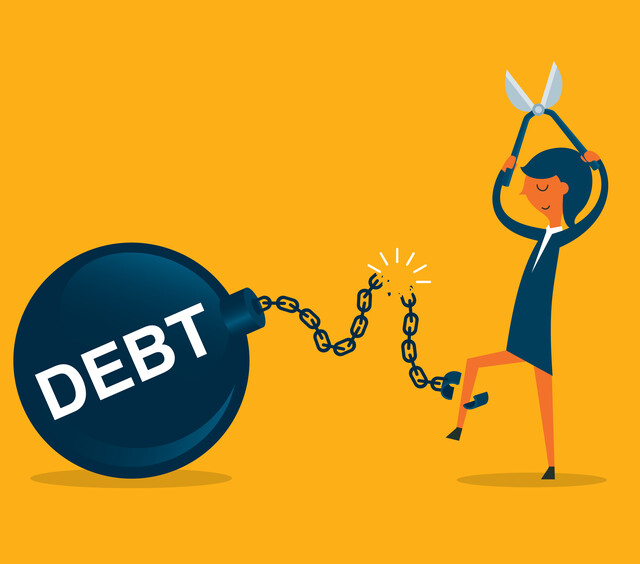-
Define operating leverage and analysis formulas.
-
Know the principle and how to calculate Break-Even points.
-
Define financial leverage and analysis formulas.
-
Define risks associated with each form of leverage, and how risks may be mitigated or eliminated.
Operating leverage is the extent fixed assets associated with fixed costs are being used by the firm. Operating leverage is the greatest in firms that have a relatively high proportion of fixed costs in relation to variable costs. Operating leverage is lower in firms where the proportion of fixed costs, relative to the variable costs, is low. When the firm has a high operating leverage, it is recognized that its profits will be very sensitive to changes in sales. For example, a small increase in sales can gain a significantly large yield and profit.
Summarily,
-
A highly leveraged firm is one that transacts few very high-gross margin sales.
-
A less leveraged firm is one whose sales improve the margin only slightly.
-
More is added to profit, and less is added to fixed costs, as the sales volume increases.
Leverage equates with risk. The greater the extent of operating leverage, the more forecasting risk there is. Small forecasting errors can translate into maximum projected cash flows. Conversely, less leveraged businesses are less dependent on individual sales when their annual overall production is higher.
The amount of operating leverage is how a percentage change in sales volume affects profits at a given level of sales.
Even small increases in sales can yield big profits when the company is close to its break-even point. This explanation considers all other aspects are held constant.
A. Cost-Volume Profit (CVP) AnalysisThe Cost-Volume Profit (CVP) Analysis is a decision-making tool used to determine product lines, marketing strategies, product pricing, and utilizations of factories and other places of product production. CVP shows the interrelationship among:
-
project prices
-
the level and volume of activity
-
the variable cost per unit
-
total fixed costs, and
-
the product mix (sold)
As with the Break-Even Analysis, CVP indicates where total costs and total revenues interest are equal. Cost and revenue behavior is linear, which precludes the presumption there are volume discounts on materials or sales. The CVP Analysis perceives that costs may be classified as fixed or variable and only changes in activity influence costs. It works on the premise that all product units are sold, and there will be no ending inventory. And finally, the product mix remains constant, regardless if more of one product is sold than another.
CONTRIBUTION MARGIN
The Contribution Margin quantifies operating leverage and shows the amount of sales revenues that remain after variable expenses are deducted. Profits increase as sales increase. Sales profits increase faster when the percentage of variable costs is low and the contribution margin is high. The Contribution Margin is fixed and does not change with sales. The break-even point is the point where the total contribution margin equals total fixed expenses.
Contribution = Sales - Variable Cost
B. Break-Even AnalysisBREAK-EVEN
Break-Even occurs when the Return on Equity (ROE), the ratio of net income to common equity, equals zero. Therefore, Break-Even occurs when the Earnings Before Interest and Taxes (EBIT) is equal to zero, expressed as:
EBIT = 0 = PQ � VQ � F
Where:
P = Average Sale $ Per Unit Output
Q = Units of Output
V = Variable Cost Per Unit
F = Fixed Operating Costs
OR
Where:
FC = Fixed Costs
P = Price Per Unit
VC = Variable Cost Per Unit
BREAK-EVEN ANALYSIS
A Break-Even Analysis is a factor of cost control, and only analyzes sales costs. It is one part of the CVP concept that is commonly used to decide between processing alternatives, such as, to what extent changes in volume will affect cost and profit and which is the most effective level of fixed assets to use. Essentially, the Break-Even Analysis is used to determine the point where total costs and total revenues interest are equal, as well as determine the "Margin of Safety."
If a set of coordinates representing cost ($) and production units are graphed and the variable cost per unit output is constant:
Where:
F = Fixed Cost
V = Variable Cost
N = Number Production Units
AND
if the cost of one has a higher variable cost, but lower fixed cost than the other,
the total cost lines will intersect at a Break-Even point, where the level of production is equal to the total cost. (Fig. 1).
C. Degree of Operating Leverage (DOL) and Operating IncomeThe Degree of Operating Leverage (DOL) is the percentage of change in operating income as a result of a percentage of change in units sold. Companies which have high operating leverage generally are ones with high research and development costs, such as those in the construction or automotive industries.
% Change in Operating Income
DOL = % Change in Unit Volume
OR
Q(P � VC)
DOL = Q(P � VC) - FC
Where:
Q = Quantity at which DOL is computed
P = Price Per Unit
VC = Variable Costs Per Unit
FC = Fixed Costs
D. Risk FactorsUncertainty increases risk. When there is a considerable amount of uncertainty regarding the forecast of several products waiting to be produced, it is advisable to process designs that have lower levels of operating leverage.
There is a greater risk of uncertainty of future profits when the production process has a higher operating leverage.
There is proportionately a greater risk of losses using production processes with higher operating leverage when sales forecasts are uncertain.
MARGIN OF SAFETY (MOS)
The Margin of Safety is a calculation of risk. It represents the firm's tolerance regarding declines in sales. The firm's variance and risk tolerance is greater when the charted Margin of Safety is high. Net losses occur when sales decline is greater than the MOS.
In a Break-Even Analysis, the MOS indicates the maximum actual or projected sales amount that exceeds the break-even sales. It may be expressed in units of currency or sales.
MOS = Total Sales ? Break-even Sales
OR, calculated as a percentage:
M/S % = Total Sales
Financial leverage reflects the amount of debt actually used in the capital structure. Financial leverage allows the firm to maximize profits earned by shareholders, as opposed to the profits earned from equity operations. That is, debt is used to gain additional assets. However, having some debt in the capital structure can significantly benefit the stockholders.
When assets in which the firm has invested return a rate that exceeds the fixed rate of return required by investors, or the fund contributors, then financial leverage is positive and the common stockholders benefit.
Financial leverage may be acquired from:
- long-term debts (bonds or notes payable)
- current liabilities (no interest investments), and
- preferred stock
Current liabilities and preferred stock may be considered positive leverage. Current liabilities are funds provided for use with no interest return required by short-term creditors. Preferred stock is positive leverage providing the dividend payable to the preferred stockholders is less than the rate of return earned on the total assets in use. Conversely, when assets do not earn a rate to sufficiently cover interest costs of debt, or preferred dividends to the stockholders, the common stockholders suffer.
Long-term debt is a more effective source of positive leverage because the interest on long-term debt is tax deductible. Preferred dividends are not.
A. Degree of Financial Leverage (DFL)The Degree of Financial Leverage (DFL) measures the percentage change in earnings per share (EPS) divided by the percentage of change in a unit of earnings before interest and taxes (EBIT). Essentially, it shows the degree of EPS sensitivity to changes in EBIT as a result of changes in debt. Typically, if interest is zero, the DLF is equal to one.
% Change in EPS
DFL = % Change in EBIT
Financial leveraging that adds value has no negative impact. Similarly, if the financial leverage cost is less than the earnings before interest and taxes, the increased risk may be considered beneficial. However, financial risk is the additional risk placed on stockholders due to increased preferred equities, debt, and interest payments, and reduced earnings per share.
This risk for the firm is in addition to the risk of inherent uncertainty in projection of future return on equity (assuming the firm typically finances with common stock). The ideal level of financial leverage is the firm's increase in the return on equity (ROE) because of prudent use of leverage. Leveraging is committing to the idea that projected returns will outweigh the risk of the investment. When leverage depends on the return on equity, increases stock volatility increase the degree of risk, which also eventually increases the risk of returns.
A decrease in the return on equity is very probable to occur when a firm is financially overleveraged. Financial overleveraging is the state of incurring enormous debt by borrowing funds at a lower interest rate, and then using the excess funds in extremely risky investment scenarios. If the investment risk outweighs the expected return, the firm's equity could decrease as a result of the stockholders believing the debt and resultant investment to be too risky.
Financial leverage also increases risk to the equity investors. Involuntary leverage is generally caused by the depletion of the value of equity � as opposed to excessive debt. The firm's operations may very well be intact, until adverse market liquidity significantly impacts the firm's degree of leverage. Lack of market liquidity and sales from others depress prices. Leverage increases and asset value declines as a result. Market liquidity risk may be mitigated by,
-
negotiating leverage terms,
-
not maximizing borrowing should additional borrowing becomes necessary, and
-
leveraging only liquid assets.
It can be assumed that a core levered asset is the same as an unlevered one. Funds used to refurbish facilities, to add a production line, or to expand globally is evidence of additional positive diversification that can feasibly offset the additional leverage risk.
Another threat to corporate insolvency, and bankruptcy, is the financial risk attributed to devalued assets that were used as collateral. The broker will demand additional collateral or funds when the value of the securities held declines. Diversification may be one solution to offset the additional risk from leverage.
RISK MITIGATION
Total risk is assumed by the stockholders in the leveraged firm. However, part of a firm's total risk can be eliminated if the stockholders diversity their own portfolios. This is a shift in focus from total risk to market, or, beta, risk. As such, the risk may be mitigated by estimating a firm's cost of equity and money relationships. Using a combined CAPM and MM after-tax model, the calculated cost of equity to a leveraged firm indicates a rate of return on the stock of a leveraged firm that includes the components of the risk-free rate, which compensates shareholders for the time value of money, a premium for business risk, and a premium for financial risk. Once the stock betas determined, they may be levered up or down so they are consistent with the firm's capital structure and tax rate. The firm's beta can be estimated given that the firm's business risk is measured in accordance with the betas of other similar firms within the industry, and that the financial risk is measured according to its own capital structure.






























